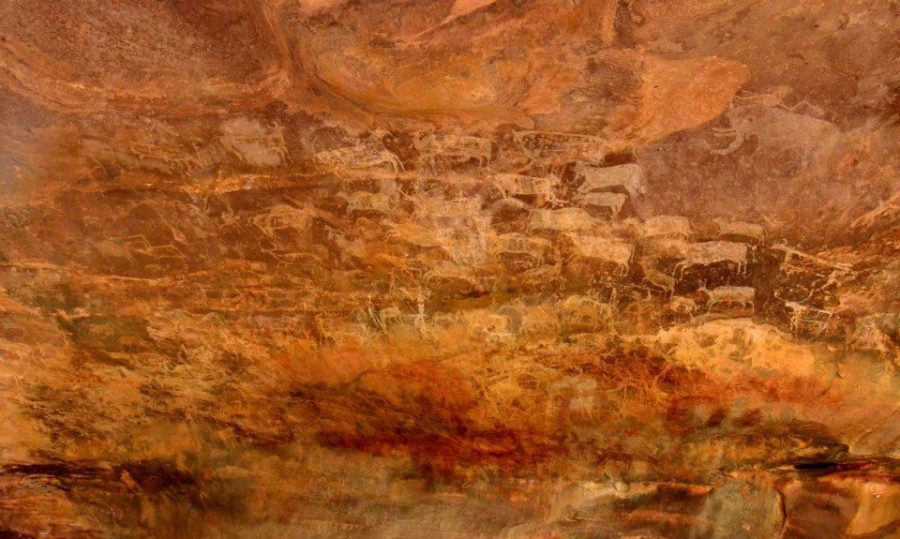Artists mix science, art, culture to discover ‘What Lies Beneath’
March 6, 2017
Artist Gunjan Kumar’s worktable is covered with turmeric, shell oysters and sea salt, waiting to be used in representations of eastern cultures and science.
Running March 10–24 at the Chicago Art Department, 1932 S. Halsted St., “What Lies Beneath” showcases the works of Kumar and Chicago native Charles Heppner, which are impacted by the relationships of philosophies and physics.
“I was very inspired by a number of eastern philosophies, modern-day physics and childhood work,” Kumar said.
Born and raised in Punjab, India, Kumar said her main influences were the processes and imagery of Paleolithic drawings in cave shelters in Central India.
The work in the show is connected by each artist’s deep exploration and understanding of origin and meaning within different cultures, objects and theories, which inspired the show’s title, according to Heppner.
“Where mine came from was thinking about my exploration of trying to understand string theory,” Heppner said.
String theory attempts to reconcile gravity with quantum physics, and one aspect of the theory is that microscopic strings use vibration to dictate what sort of particle they become. Using his degree in mathematics, Heppner started to fantasize about miniature strings and how they interact and create relationships with each other.
According to Kumar, her exploration of the origins of creativity is what lies beneath her work. The two artists’ works are connected because both explore the origins of creation in some aspect, she said.
Another common approach is their minimalistic use of material. Both artists use gesso, a chalk powder used to make a paint for priming canvases, she said.
The exhibit also features collaborative installations by Kumar and a third artist, Kevin Benham, assistant professor of Landscape Architecture in the school of Design at South Dakota State University, who met through the Edward Albee Foundation in July 2016.
Originally a landscape architect, Benham said he and Kumar approach art through different arenas.
“That is a huge divide for us in many ways,” Benham said. “But it is also a way where we can collaborate in an interesting way.”
All three artists come from different backgrounds and create different art forms that end up complementing each other through their relationships and curiosity of exploration.
“I have been working with sea salt, [Kumar] uses turmeric, which is very traditional in Indian culture and so it is a very east and west type of idea,” Benham said.
Benham said the installations are not created until days before the opening, when the artists are able to look at and be in the gallery space. The two artists will then quickly work to respond to each other’s art and create a connective piece.
“[Kumar] and I just work really well together even though we come from such different backgrounds and we work very differently,,” Benham said. “We still respect each other that the things that we make [collectively] are probably more powerful than the things that we make individually.”








